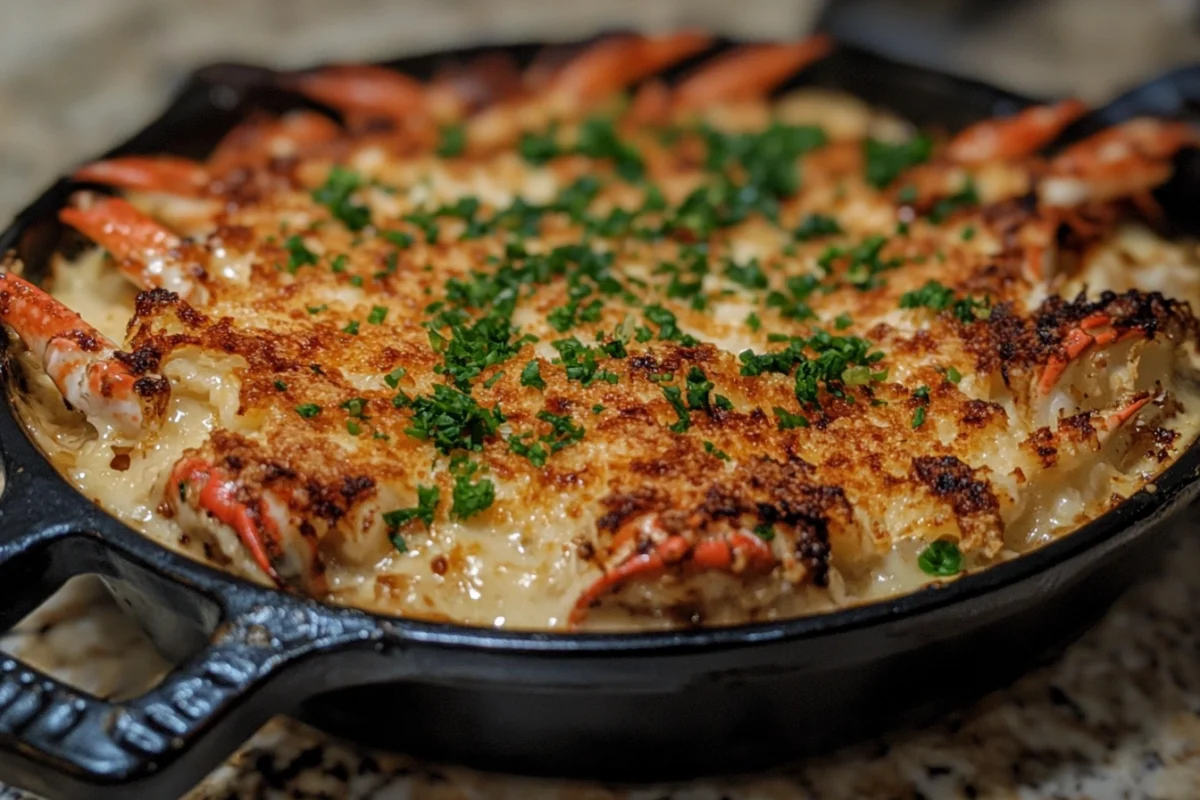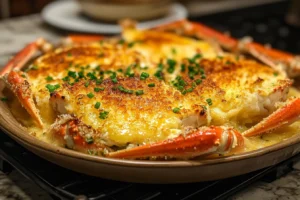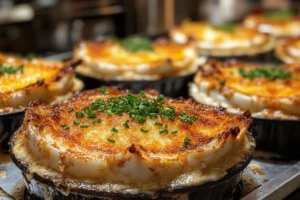This article explores the key ingredients that form the base of a classic crème brûlée. From rich cream to delicate vanilla, discover what makes this dessert so indulgent and special.
Understanding the Core of Crème Brûlée
Crème brûlée, a timeless dessert, delights with its smooth custard and crisp sugar topping. But what is crème brûlée mostly made of? The answer lies in a few essential ingredients. These components work together to create its signature texture and flavor. Indeed, a classic crème brûlée is surprisingly simple. It mainly requires cream, eggs, sugar, and vanilla. Let’s explore these further.
The Dairy Foundation: Cream
Cream is the star of crème brûlée. It provides the richness and smoothness that defines this dessert. Indeed, the higher the fat content, the more luxurious the crème brûlée will be. Typically, heavy cream or whipping cream is used. For example, these creams have a high fat content. Consequently, they ensure a creamy final product. Therefore, the type of cream chosen significantly impacts the texture. Additionally, some recipes may use a mix of milk and cream. However, heavy cream is chiefly used for a traditional crème brûlée. Thus, it is a critical component. Furthermore, the quality of the cream matters. Fresh, high-quality cream provides the best results. In addition, it contributes to a better flavor profile.
Discover insider tips in Crème Brûlée Secret.
The Binding Agent: Egg Yolks
Egg yolks are another key component of crème brûlée. They act as a binding agent. Specifically, they create the custard’s structure. Because of their lecithin content, yolks help to emulsify the mixture. Consequently, they ensure a smooth and creamy texture. Moreover, egg yolks add color and extra richness. Furthermore, it is vital to use fresh eggs. Indeed, they make a big difference in the final flavor. Therefore, egg yolks are as important as the cream. Moreover, the color of the yolks can even indicate the quality and feed of the chicken, affecting the final color of the dessert. Accordingly, paying attention to these small details can result in a better final product.
Sweetening the Deal: Sugar
Sugar plays a dual role in crème brûlée. First, it sweetens the custard. Second, it forms the crisp topping. In fact, the sugar caramelizes when heated. Thus, creating the signature hard shell. Additionally, granulated sugar is typically used. It dissolves easily into the custard mixture. However, the type of sugar for the topping can vary. Usually, a thinner layer is achieved with granulated sugar, but some chefs prefer a coarser sugar. Altogether, sugar is essential for both the flavor and texture. Indeed, the sweetness level is important and can be adjusted slightly to taste. Besides, some might prefer less sugar in the custard and focus more on the caramelized top.
The Flavor Enhancer: Vanilla
Vanilla is the most popular flavor in crème brûlée. It adds a warm, aromatic note. Indeed, vanilla beans are preferred for the best flavor. Vanilla extract is also an option. However, it might not have the same depth of flavor. Furthermore, scraping the seeds from a vanilla bean adds tiny flecks. Consequently, enhancing the visual appeal of crème brûlée. Specifically, the quality of vanilla significantly impacts the overall taste. Accordingly, it should be a premium ingredient. Therefore, vanilla adds a crucial depth of flavor. Moreover, the source of vanilla can also affect the complexity of its flavor, from Tahitian to Madagascan. Likewise, choosing the right type of vanilla can make a big difference in the dessert’s final outcome.
The Method: How the Ingredients Become Crème Brûlée
What is crème brûlée mostly made of is only part of the story. The method is equally important. In fact, the gentle baking process is crucial. The custard base must be baked slowly. This ensures a smooth, even texture. Furthermore, baking at a low temperature prevents the eggs from scrambling. Therefore, the technique is as important as the ingredients. Additionally, this gentle process allows the flavors to meld perfectly. Thus, patience is key to achieving the desired results.
Combining the Ingredients
First, the cream, egg yolks, and sugar are combined. Typically, they are whisked together gently. This ensures that air is not incorporated. Indeed, it prevents the custard from becoming too frothy. Afterward, vanilla is added to the mixture. Accordingly, the mixture must be smooth and well combined. Finally, the custard base is ready for baking. Subsequently, some recipes might call for a gentle heating of the cream before combining, to ensure better incorporation. In addition, it is important to stir the mixture without creating bubbles.
Baking the Custard
The custard is poured into ramekins. These are then placed in a water bath. The water bath is essential. Specifically, it helps to bake the custard gently and evenly. Furthermore, the ramekins should be submerged halfway in the water. Baking time depends on the oven temperature and ramekin size. Consequently, it takes between 30 to 60 minutes. Afterward, the custards should be slightly jiggly but set around the edges. Indeed, the water bath prevents the edges from overcooking before the center is set. Moreover, the even heat distribution makes sure the custard bakes smoothly. Therefore, the water bath is a very important step.
The Caramelized Topping
After baking, the crème brûlée must cool. Once cooled, the sugar topping is added. A thin layer of sugar is sprinkled over each custard. Then, a kitchen torch is used to caramelize it. Indeed, the heat melts the sugar and creates a crisp crust. Therefore, this step is vital for the crème brûlée‘s texture. Subsequently, this final step completes the creation of crème brûlée. Moreover, the type of torch can affect the caramelization, with some torches creating a faster, more intense heat. Also, the way you move the torch, a back and forth motion, ensures even caramelization.
Key Components: A Closer Look
Let’s take a closer look at how each key component of crème brûlée contributes to the overall experience. It is important to understand how what is crème brûlée mostly made of achieves the desired results. Indeed, each ingredient has a particular purpose. Furthermore, understanding these roles will improve your crème brûlée making skills.
The Role of Cream
As mentioned, cream is the foundation of crème brûlée. Specifically, it provides the fat content needed for a rich custard. The fat helps to create a smooth, indulgent mouthfeel. Moreover, the cream also adds moisture. This prevents the custard from becoming dry. Thus, the cream is not just a carrier for the flavor. It also contributes to the characteristic texture. Furthermore, the higher the fat percentage, the richer and smoother the custard. Additionally, some chefs prefer to infuse cream with different flavors for a more complex profile.
The Function of Egg Yolks
Egg yolks are essential for the structure of crème brûlée. Specifically, their emulsifying properties bind the liquid and fat. Furthermore, egg yolks coagulate when heated. Therefore, they set the custard, giving it its firm yet tender consistency. Moreover, they contribute to the rich color. Indeed, the yolks provide a deep yellow hue. In addition, the proteins in the yolks help create a stable emulsion. Likewise, the yolks are what makes this custard different from a lighter custard.
The Sweetness of Sugar
Sugar contributes sweetness to the custard. It is also used to create the caramelized topping. Initially, sugar dissolves in the custard base, sweetening it. Then, the sugar sprinkled on top caramelizes, forming the signature crust. Thus, the contrast of the sweet, crisp topping against the smooth custard is a key element of crème brûlée. Additionally, the caramelization process adds a deep, complex flavor. Furthermore, the type of sugar can slightly alter the flavor and texture. Indeed, experimenting with different sugars can be fun and delicious.
The Aroma of Vanilla
Vanilla enhances the flavor of crème brûlée. Its complex aroma complements the other ingredients. In fact, the flavor notes in vanilla create a warm and inviting dessert. Specifically, using high-quality vanilla, such as vanilla beans, elevates the crème brûlée. Furthermore, the little flecks of vanilla are pleasing to the eye. Consequently, vanilla enhances not only the flavor but also the aesthetics. Moreover, the aromatic compounds of vanilla beans are what gives the dessert its signature smell. Similarly, some chefs also use vanilla paste for ease, but fresh vanilla beans have the best result.
Variations on a Classic Theme: Crème Brûlée
While the classic crème brûlée is wonderful, many variations exist. Accordingly, you can explore different flavor profiles. Moreover, you can change the type of sugar. Therefore, understanding what is crème brûlée mostly made of is key to creating your own unique version. Indeed, experimenting with the base ingredients can lead to very interesting results. Also, different techniques can be used to obtain slightly different textures.
Flavor Infusions
You can infuse the cream with various flavorings. For example, coffee, chocolate, or even spices. Furthermore, you can add citrus zest. Indeed, this creates a refreshing note. Consequently, the variations are endless. Moreover, these additions allow for creativity. Therefore, feel free to experiment with different flavor combinations. In addition, you can use whole spices to infuse the cream, and then strain them out for a subtle taste. Likewise, you can infuse with herbs like lavender or rosemary for a more sophisticated profile.
Different Sugars
Various types of sugars can be used for the topping. Specifically, you can use brown sugar or turbinado sugar for a deeper flavor. Furthermore, these sugars caramelize differently. Indeed, they create different textures. Consequently, the choice of sugar can significantly alter the overall experience. Therefore, exploring these variations adds a new dimension to crème brûlée. Also, some sugars caramelize faster than others, so it is important to pay close attention when using a kitchen torch. Besides, experimenting with different sugars can also add a variety of colors to the top of the custard.
Exploring Add-Ins
In addition, you can add extra components to the custard base. For instance, a swirl of fruit jam can enhance the presentation. Moreover, small pieces of chocolate can add a layer of richness. Likewise, chopped nuts can provide some texture. Therefore, consider these additional elements to customize the crème brûlée. Furthermore, you can also add fruit purees to the base for a different taste and texture. Similarly, different extracts can be added to enhance the flavor profile beyond just vanilla.
Alternative Dairy Options: Exploring Substitutes
While cream is traditional, there are times when alternatives are needed. Indeed, this is important for those with dietary restrictions. Or, those who simply want to lighten the dessert. Thus, exploring dairy options will expand its appeal. Therefore, understanding what is crème brûlée mostly made of allows to tweak it.
Using Milk and Half-and-Half
Milk and half-and-half can replace some of the cream. However, this will affect the texture. Specifically, the custard will be less rich. Consequently, the mouthfeel will be lighter. Indeed, this is a viable option for a lighter crème brûlée. Furthermore, it can still be a very enjoyable dessert. Therefore, this is a great option for some.
Plant-Based Options
Plant-based creams can also be used. For example, coconut cream or cashew cream. These ingredients offer a dairy-free alternative. Moreover, they can still achieve a creamy texture. However, the flavor might be slightly different. Accordingly, choose a plant-based cream that has a neutral flavor. Likewise, many plant-based options can be used. Thus, it is important to pick one wisely.
Adjustments and Considerations
Using dairy alternatives might require minor adjustments. Specifically, you might need to add a thickener. Furthermore, some plant-based options might not thicken as much. Indeed, these subtle changes might be needed. Consequently, some experimenting will likely be necessary. Therefore, pay close attention while substituting ingredients.
Frequently Asked Questions (FAQs)
What is the secret to a perfect crème brûlée?
The secret to a perfect crème brûlée lies in the balance of high-quality ingredients. Also, it is important to bake the custard gently at a low temperature. Additionally, achieving the right caramelization is key. Moreover, using fresh eggs and premium vanilla will enhance the flavor significantly. Thus, paying attention to every detail ensures a perfect crème brûlée.
Can I use milk instead of cream in crème brûlée?
You can use milk instead of cream. However, this will result in a less rich crème brûlée. Indeed, the fat content in cream contributes to the smoothness and texture. Therefore, for best results, use cream, or at least a mix of cream and milk. Furthermore, using a mix of half-and-half and milk may result in a good balance. Likewise, it all depends on your preferences and what you are trying to achieve with your dessert.
How do I know when my crème brûlée is done baking?
Crème brûlée is done baking when the edges are set. The center should still be slightly jiggly. In fact, it will continue to set as it cools. Therefore, don’t overbake it. Moreover, gently shaking the ramekin can help you determine if the edges are set. Also, the color should be a pale yellow, and not too dark.
Why is my crème brûlée watery?
Watery crème brûlée can result from various factors. Such as, the custard being baked at too high of a temperature. Or, it could be the result of not using a water bath, or overbaking the custard. Accordingly, these issues should be addressed. Specifically, ensuring that the oven temperature is low and consistent is important. Furthermore, a well-sealed water bath will help to achieve the best results.
Conclusion: The Magic of Simple Ingredients
In conclusion, crème brûlée is a testament to the power of simple, high-quality ingredients. What is crème brûlée mostly made of? It is primarily composed of cream, egg yolks, sugar, and vanilla. Indeed, these components, when combined with a careful method, create a truly indulgent and satisfying dessert. Moreover, understanding the role of each ingredient allows you to create your own unique variations. Therefore, whether you stick with the classic recipe or experiment with new flavors, crème brûlée is a timeless treat. Finally, this classic dessert continues to please and amaze, proving that sometimes less is more. Thus, enjoy making and savoring every bite of your homemade crème brûlée. Subsequently, mastering this dessert provides an excellent base for trying other culinary variations. Ultimately, crème brûlée is an accessible and elegant dessert for any occasion.
For a deeper understanding of custard-based desserts, explore What’s the Difference Between Crème Brûlée and Custard?.




